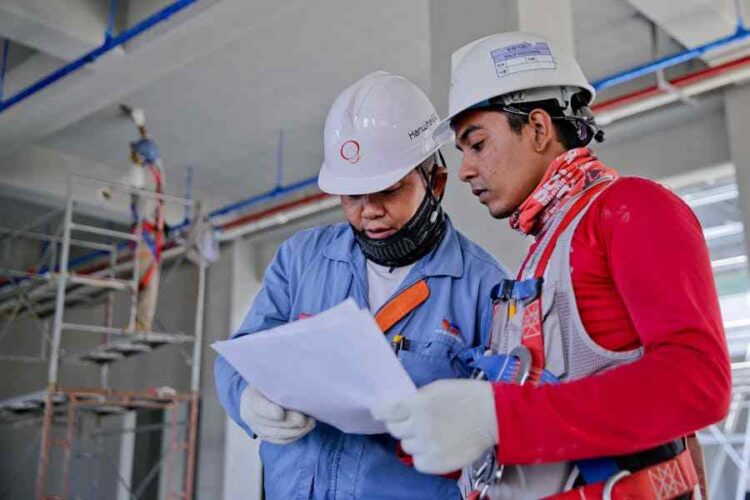The integrity of a construction project is paramount for the safety and satisfaction of its occupants and users. However, despite best efforts, construction defects are not uncommon. The Houston residential construction defects attorneys want homeowners and construction companies to be aware of their nature, causes, and the legal avenues available.
What Constitutes A Construction Defect?
A construction defect may be defined as a condition where a component of a building, or the building itself, is not constructed in a reasonably workmanlike manner or the structure fails to perform in the manner intended by the builder. Such defects can range from minor issues that can be easily fixed to significant problems that can affect the building’s integrity and safety.
Types Of Construction Defects
Design Deficiencies
Design professionals such as architects or engineers may create plans that are structurally unsound or not feasibly executable. Such deficiencies can lead to problems like leaky roofs, inadequate structural support, improper drainage, and more.
Material Deficiencies
Material defects involve the use of inferior building materials that fail to meet reasonable quality standards. For instance, this could include the use of defective concrete, shoddy drywall, or substandard windows and doors.
Construction Deficiencies
Also known as workmanship defects, these arise from poor quality construction that does not meet industry standards. Examples include electrical and plumbing systems that do not function properly, poor installation of fixtures, and inadequate sealing of gaps leading to water intrusion.
Subsurface Deficiencies
Particularly relevant to buildings with basements or those built on slopes, subsurface defects include improper compaction of the building site’s subsurface, which can later result in shifting, flooding, or landslides.
Causes Of Construction Defects
A range of factors can contribute to construction defects:
Human Error
Errors can be made at any stage of the construction process, often due to unskilled labor, inadequate quality assurance processes, or lack of supervision.
Poor Quality Materials
Even with meticulous workmanship, the use of inferior materials can lead to defects. Sometimes, these defects arise due to unavoidable imperfections in natural materials.
Environmental Factors
External elements like harsh weather conditions can exacerbate existing problems or cause materials to deteriorate at an accelerated pace.
Age and Wear and Tear
Over time, even the most robustly constructed buildings will show signs of age. Regular maintenance is the key to managing this inevitable decline.
Legal Implications Of Construction Defects
When construction defects arise, they can lead to legal disputes between homeowners, builders, developers, contractors, and other parties.
Liability
Determining who is at fault for a construction defect can be complex. Liability depends on various factors including the contractual relationships between parties, warranties provided, and the specific circumstances that led to the defect.
Design Professionals
Architects or engineers may be liable for design defects if it can be proved that they did not meet the usual professional standards.
Contractors and Builders
These parties may be responsible for workmanship defects. If they fail to construct the building according to the agreed specifications and industry standards, they may face legal action.
Material Suppliers and Manufacturers
If defects are traced back to the materials used, manufacturers and suppliers may be liable under product liability principles.
Litigation and Legal Actions
If parties are unable to resolve defects amicably, they may turn to litigation.
Negligence
A common claim in construction defect cases involves accusations that a professional did not exercise the level of care and skill expected of them, leading to losses or damages.
Breach of Contract
If it’s determined that a party has not adhered to the terms of the contract, whether it be timelines, materials, or work quality, they can be sued for breach of contract.
Warranty Claims
Construction typically comes with a variety of warranties, whether express or implied. If defects violate these warranties, legal claims may follow.
Resolution Of Defects
Mediation and Arbitration
Dispute resolution is typically a preferable first step before engaging in litigation. These processes are less formal and can be less costly, but still allow parties to reach enforceable agreements.
Litigation and Trials
When alternative dispute resolution fails, parties may proceed to litigation, where a judge or jury determines the outcome of the defect dispute.
Damages and Repairs
The court may order responsible parties to pay damages or to repair the defects at their own cost.
The landscape of construction defects is a minefield of potential problems for builders and owners alike. By understanding the types of defects, their causes, and the legal implications, stakeholders can be better prepared to prevent serious issues and to handle any that arise. Legal counsel should be engaged at the earliest sign of trouble to ensure the rights of all parties are foremost and safeguarded.










